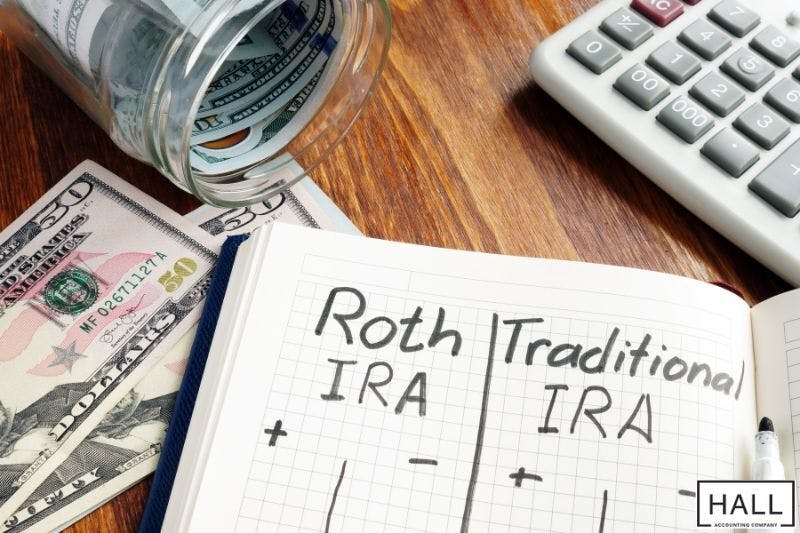
Let’s dive into one of the most important decisions you’ll make when planning for your retirement - choosing between a Roth and a Pre-Tax retirement account. Both options have their perks, but the best choice for you depends on your personal financial situation and what you expect your future to look like. Let’s break it down together.
Understanding Roth retirement accounts
Let’s begin with the Roth accounts. The idea here is pretty straightforward: you’re putting money into your retirement account after you’ve already paid taxes on it. So, you’re taking care of the taxes upfront. The best part? When you’re ready to retire and start taking money out, you don’t have to worry about paying taxes on those withdrawals. Everything you take out is yours, tax-free.
The Roth IRA, which has been around since 1997, is a popular choice for people who think they might be in a higher tax bracket when they retire. If you believe taxes might go up in the future, this could be a great way to lock in today’s tax rates. Roth 401(k)s, which were introduced in 2006, work similarly but with the added benefit of higher contribution limits. It’s like getting the best of both worlds - a Roth IRA and a 401(k).
One thing to keep in mind with Roth 401(k) is that once you reach 73 years old, you’ll need to start taking required minimum distributions (RMDs). But if that doesn’t sound appealing, you can always roll your Roth 410(k) into the Roth IRA, which doesn’t have RMDs.
Roth after-tax contributions are an important strategy in planning your retirement, but it can get overwhelming to make these decisions on limited knowledge or information. Hall Accounting Company’s tax advisor can help you maximize your investment earnings and increase your qualified distributions. Get more money out when you need it.
Pre-tax retirement accounts explained
Now, let’s talk about Pre-Tax retirement accounts, like traditional IRAs and 401(k)s. These are a bit different because they let you make pretax contributions, reducing your adjusted gross income. This means you get an immediate tax break in the year you make the contributions, which can be really helpful if you’re looking to reduce your tax bill right now.
These accounts have been the go-to option for many years, especially for those who are currently in a higher tax bracket and want to delay paying taxes until retirement. The idea here is that you’ll be in a lower tax bracket when you retire, so when you start taking money out, you’ll pay less in taxes overall.
Another advantage of these accounts is that they can help lower your taxable income during your peak earning years. Plus, if your employer offers a match on your 401(k) contributions, that’s free money for your retirement, and who doesn’t love that?
Comparing Roth and Pre-Tax accounts

So, how do these two options stack up against each other? The main difference is in how and when you pay taxes. With a Roth contribution, you’re paying taxes now, so you don’t have to worry about them later. With Pre-Tax contributions, you’re deferring the taxes until retirement, which can help you save money today.
Here are some quick points to consider:
Tax Treatment
With Roth, you pay taxes now, but your retirement withdrawals are tax-free. Pre-Tax gives you a tax break now, but you’ll pay taxes on the money when you take it out in retirement.
Contribution limits and eligibility
For 2024, you can contribute up to $7,000 or $8,000 (if you’re 50 or older) to an IRA, whether Roth or traditional. For 401(k)s, the limit is $23,000 or $30,500 (if you’re 50 or older). However, keep in mind that Roth IRAs have income limits-if you’re a high earner, you might not be eligible to contribute directly to a Roth IRA.
Current and future taxes
If you think your tax rate will be higher in retirement, Roth contributions might make more sense. But if you expect to be in a lower tax bracket later, a Pre-Tax account could be the better choice.
The power of combining both Roth and Pre-tax contributions
Here’s a little secret that works well for retirement planning: Make both Pre-Tax and Roth contributions. By contributing to both pretax and Roth contributions, you’re giving yourself a wider scope of options. This strategy is called tax diversification, and it’s a smart way to manage your retirement savings.
Understanding the tax implications of your retirement savings is crucial. Whether you’re just starting to save or are nearing retirement, Hall Accounting Company can provide you with personalized tax planning and preparation strategies tailored to your unique financial situation.
In Summary
Roth and Pre-Tax contributions not only secure your retirement, but they can help you manage your take-home pay. For qualified withdrawals on a Roth account, you need to be at least 59.5 years old and it must be at least 5 years since your first Roth contribution. If you withdraw earnings before the 5 year deadline, you will be subject to a 10% withdrawal penalty.
On the other hand, you can begin withdrawing from your 401(k) anytime after you reach 59.5 years, but it will be taxed as ordinary income since you did not pay any income tax at the time of your contributions.
Each strategy holds unique benefits depending on what you want to achieve with your state income taxes immediately, and into the future.
Roth contributions - Invest now after you’ve paid your tax, and you’ll have more money later.
Pre-Tax contributions - Invest now before and reduce your adjusted gross income, but pay taxes when you retire.
That’s it for our quick guide discussion on Roth and Pre-Tax accounts, where we took a quick dip into the topic. If you want more information, or want to discuss your options, give us a call today.